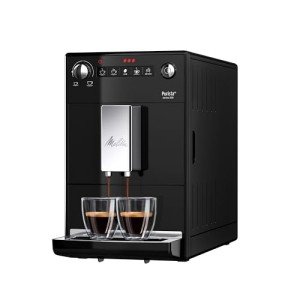The Art of Italian Espresso Machines: A Brewed Tradition
Italian espresso machines are not just devices; they are an essential part of Italy's rich coffee culture, representing a blend of artistry, engineering, and style. Coffee aficionados around the world recognize the value of high-quality espresso, a staple of Italian life and food. This post checks out the history, mechanics, types, and factors to think about when purchasing an Italian espresso machine, reflecting the depth of this beloved beverage and its brewing techniques.
History of Espresso Machines
The espresso machine's evolution go back to the early 20th century in Italy, where coffee was not merely a drink however a vital social routine. The initial attempts to brew espresso begun with basic, stove-top designs, slowly progressing into intricate machines that might duplicate the best brew.
- 1901-- The First Espresso Machine: The first steam-powered espresso machine, known as the "Ideale," was developed by Luigi Bezzera. This equipment marked a turning point in espresso developing.
- 1938-- The Lever Machine: The intro of the lever machine made it simpler to manage the pressure used in espresso extraction, enhancing taste consistency.
- 1947-- The Automatic Machine: Reaching more customers, Gaggia introduced the first automatic espresso machine, more promoting espresso bars.
- 2007-- The Digital Age: Technological advancements resulted in the birth of totally programmable machines, enabling users to personalize their brewing settings to achieve a customized coffee experience.
Key Features of Italian Espresso Machines
Italian espresso machines embody precision, workmanship, and development. Here are some essential elements that highlight their significance:
| Feature | Description |
|---|---|
| Boiler Type | Figures out how heat is generated and kept. Common types include single boiler, dual boiler, and heat exchanger. |
| Group Heads | Where the coffee is brewed; commercial machines frequently have numerous group heads for efficiency. |
| Pressure Control | Vital for accomplishing the ideal espresso; most machines operate at 9 bars of pressure. |
| Frothing Capabilities | The steam wand allows for milk frothing, necessary for drinks like cappuccino and latte. |
| Build Quality | The products used (stainless-steel, brass, etc) impact sturdiness and heat retention. |
Kinds Of Italian Espresso Machines
Picking the right machine hinges on user preferences, budget, and meant use. Below are the main kinds of Italian espresso machines:
Manual Espresso Machines
- Pros: Offer complete control over the brewing process, permitting a customized touch.
- Cons: Require ability and practice, can be labor-intensive.
Semi-Automatic Machines
- Pros: Provide a balance between automatic and manual processes; users control water circulation.
- Cons: Can have a steeper learning curve than fully automatic machines.
Completely Automatic Machines
- Pros: Simplify the developing process with push-button operations; perfect for newbies.
- Cons: May sacrifice some of the subtleties of manual developing.
Super-Automatic Machines
- Pros: Grind, tamp, brew, and froth instantly; practical for busy lifestyles.
- Cons: Less control over the brewing variables, capacity for a less genuine espresso experience.
Buying Guide: Factors to Consider
Choosing the perfect Italian espresso machine can be complicated, however thinking about the following factors can streamline the decision-making process:
- Budget: Italian espresso machines vary from affordable to high-end models, so set a budget upfront.
- Use Frequency: Evaluate how frequently you will use the machine; everyday users may desire a more durable alternative.
- Space: Measure your kitchen or counter area; some machines can be big and require sufficient clearance.
- Maintenance: Consider ease of cleaning; machines with detachable parts or integrated cleaning functions may minimize maintenance.
- User Skill Level: Beginners might prefer totally or semi-automatic machines, while knowledgeable baristas can deal with manual machines.
- Brand name Reputation: Research brand names known for quality, such as Breville, Gaggia, and La Marzocco.
Popular Italian Espresso Machine Brands
Italian craftsmanship is renowned for producing a few of the best espresso machines worldwide. Here are top brand names worth considering:
- Gaggia: Known for its home espresso machines and price.
- La Marzocco: An exceptional brand name known for its commercial-grade machines and ingenious technology.
- Rancilio: Renowned for its long lasting develop and professional-quality machines ideal for home and commercial use.
- Sage/Breville: Offers advanced features and user-friendly designs, perfect for both novices and enthusiasts.
Frequently asked questions
What is the distinction between espresso and routine coffee?
Espresso is a focused coffee brewed by forcing hot water through finely-ground coffee under pressure. It has a thicker consistency, richer flavor, and greater caffeine concentration than routine coffee.
Can I make milk-based beverages with an espresso machine?
Yes, numerous Italian espresso machines include a steam wand to froth milk for beverages like coffees, lattes, and macchiatos.
How typically should I clean my espresso machine?
Routine upkeep is important. Normally, an extensive cleansing is advised every few weeks, while descaling needs to be done every 1 to 3 months, depending upon water solidity.
What is the perfect pressure for brewing espresso?
The perfect pressure for developing espresso is around 9 bars. This pressure guarantees the optimal extraction of tastes from the coffee premises.
Are more costly machines worth the financial investment?
Higher-end machines often use better products and innovation, supplying enhanced durability and more constant results. For serious coffee lovers, purchasing a good machine can raise the espresso experience significantly.
Italian espresso machines are far more than simple brewing devices; they are a celebration of a cultural tradition that has affected coffee consumption worldwide. With different models available to fit any user's requirements-- ranging from newbies to experienced baristas-- there is an Italian espresso machine completely matched for everybody. As you embark on your espresso journey, understanding the history, mechanics, and options will improve your experience and gratitude for this time-honored beverage. Whether Buy Coffee Machine seek to recreate a coffee shop atmosphere in the house or fine-tune your developing strategy, these machines can providing extraordinary cups of espresso adorned with the rich history of Italian coffee culture.

